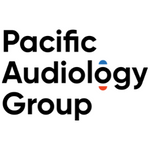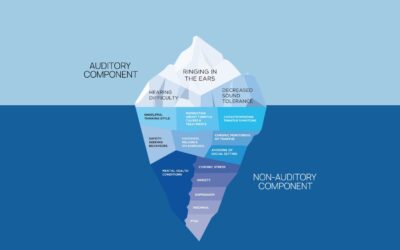Medication-related hearing loss affects individuals of all ages and can profoundly impact quality of life, communication abilities, and overall wellbeing. For children, these effects can be particularly devastating, disrupting speech, language, and social development. Despite its significance, drug-induced ototoxicity receives insufficient attention in healthcare settings, creating a knowledge gap among both patients and providers.
What Is Ototoxicity?
Ototoxicity is an adverse reaction affecting the inner ear or auditory nerve. It manifests in two primary forms:
- Cochleotoxicity: Results in partial or complete hearing loss
- Vestibulotoxicity: Causes vertigo or dizziness
These reactions occur when medications cross the blood-labyrinth barrier and damage hair cells in the inner ear. Think of this barrier as similar to the placental barrier during pregnancy—the inner ear is highly protected, but once certain drugs enter, they can damage sensitive cells. While the exact mechanisms vary and are still being studied, many ototoxic medications cause oxidative stress and inflammation in the cochlea, ultimately leading to cell death.
Accurately estimating the prevalence of drug-induced hearing loss remains challenging due to varying monitoring guidelines, individual susceptibility differences, and diverse dosing regimens. However, research suggests it may be more common in developing countries, likely due to extended use of certain medications and limited hearing testing procedures.
Who’s Most at Risk?
Several factors increase susceptibility to medication-induced hearing loss:
- Very young or elderly individuals
- Genetic predisposition (particularly mutations in mitochondrial DNA)
- Pre-existing hearing impairment
- Reduced kidney function
- Extended treatment duration
- Concurrent use of multiple ototoxic medications
- History of noise exposure
- Conditions like diabetes, hypertension, or cardiovascular disease
Key Medications Associated with Ototoxicity
Aminoglycoside Antibiotics
These powerful antibiotics (gentamycin, tobramycin, amikacin, neomycin, streptomycin) pose the highest risk among antibiotics. Used primarily for serious infections like multidrug-resistant UTIs, bacterial endocarditis, drug-resistant tuberculosis, and respiratory infections in cystic fibrosis patients, they damage outer hair cells in the cochlea, often causing permanent and irreversible hearing loss that typically begins with high-frequency loss.
The incidence ranges from 20-63% in patients receiving multi-day treatments, with risk increasing significantly when therapy extends beyond seven days. Patients may report vestibular issues and tinnitus before becoming aware of hearing loss, making early detection challenging but crucial.
Platinum Chemotherapy Agents
Of these cancer-fighting compounds, cisplatin is the most ototoxic, affecting 30-60% of patients with cumulative and irreversible effects ranging from tinnitus to severe hearing loss. Children, patients receiving high cumulative doses, and those with pre-existing hearing issues face the greatest risk.
Cisplatin primarily causes cochleotoxicity, resulting in tinnitus and high-frequency hearing loss starting in the 4-8kHz range. What makes cisplatin particularly concerning is its ability to accumulate and remain in the cochlea for months, causing ongoing damage long after treatment ends. For patients experiencing significant hearing loss, oncologists may consider alternative agents like carboplatin or oxaliplatin, which carry lower ototoxicity risks.
Loop Diuretics
Medications like furosemide (Lasix) cause ototoxicity in less than 10% of cases, but their widespread use—particularly among older adults with impaired kidney function—makes them significant contributors to hearing loss. Studies show older adults taking loop diuretics have a 40% higher risk of developing hearing loss and 33% higher risk of progressive hearing loss over ten years.
Risk is highest with high-dose intravenous administration, common during hospitalizations for acute conditions. For chronic users with multiple risk factors, regular hearing assessments should be considered part of routine care.
Analgesics
Common pain relievers found in most medicine cabinets may contribute to hearing issues, particularly when used frequently:
- NSAIDs (ibuprofen, naproxen, aspirin): Can impair outer hair cell function, inhibit prostaglandin formation, and reduce cochlear blood flow
- Acetaminophen/Paracetamol: Research findings are mixed, but some studies suggest regular use (more than twice weekly) may increase hearing loss risk
What makes these medications particularly concerning is their over-the-counter availability, meaning healthcare providers may be unaware of patients’ usage patterns. A 2012 study found that women using ibuprofen or acetaminophen two or more days per week had an increased risk of hearing loss, with risk increasing with frequency of use.
Prevention and Management Strategies
Healthcare professionals can take several steps to address medication-related ototoxicity:
- Baseline Assessment: Conduct comprehensive hearing evaluations before initiating treatment with known ototoxic medications
- Regular Monitoring: Implement scheduled hearing tests during and after treatment, particularly for high-risk medications
- Dose Adjustments: Consider modifying dosages or selecting alternative medications when early signs of ototoxicity appear
- Collaborative Care: Build relationships between audiologists, pharmacists, physicians, and other healthcare providers to create effective referral pathways
- Patient Education: Inform patients about potential risks and encourage reporting of symptoms like tinnitus, which often precedes measurable hearing loss
- Medication Review: For patients with hearing loss, a comprehensive medication review may identify contributing factors and alternatives
Research Horizons
Scientists are actively researching otoprotectants to prevent or mitigate medication-induced hearing damage. One promising development is sodium thiosulfate (Pedmark), approved by the FDA to reduce cisplatin’s ototoxic effects in pediatric cancer patients. Other potential agents under investigation include N-acetyl cysteine, D-methionine, dexamethasone, and curcumin.
Intratympanic delivery methods are also being explored to provide more targeted protection with fewer systemic effects. As our understanding of ototoxicity mechanisms improves, we can hope for better prevention strategies and treatments in the future. Until then, awareness, careful monitoring, and collaborative healthcare approaches remain our best tools for protecting hearing in patients requiring these vital medications.
If you would like to learn more about ototoxicity, join Learn On for free and gain access to free CEUs through Pacific Audiology Group’s course library.
If you found this blog helpful, please share it on social media!
Referecnes
Steyger PS. Mechanisms of Ototoxicity and Otoprotection. Otolaryngol Clin North Am. 2021 Dec;54(6):1101-1115. doi: 10.1016/j.otc.2021.08.007. PMID: 34774227; PMCID: PMC8597902.
Joo Y, Cruickshanks KJ, Klein BEK, Klein R, Hong O, Wallhagen MI. The Contribution of Ototoxic Medications to Hearing Loss Among Older Adults. J Gerontol A Biol Sci Med Sci. 2020 Feb 14;75(3):561-566. doi: 10.1093/gerona/glz166. PMID: 31282945; PMCID: PMC7328195.
Curhan SG, Shargorodsky J, Eavey R, Curhan GC. Analgesic use and the risk of hearing loss in women. Am J Epidemiol. 2012 Sep 15;176(6):544-54. doi: 10.1093/aje/kws146. Epub 2012 Aug 29. PMID: 22933387; PMCID: PMC3530351.
Curhan SG, Eavey R, Shargorodsky J, Curhan GC. Analgesic use and the risk of hearing loss in men. Am J Med. 2010 Mar;123(3):231-7. doi: 10.1016/j.amjmed.2009.08.006. PMID: 20193831; PMCID: PMC2831770.
Joo Y, Cruickshanks KJ, Klein BEK, Klein R, Hong O, Wallhagen MI. The Contribution of Ototoxic Medications to Hearing Loss Among Older Adults. J Gerontol A Biol Sci Med Sci. 2020 Feb 14;75(3):561-566. doi: 10.1093/gerona/glz166. PMID: 31282945; PMCID: PMC7328195.
Tan, W.J., & Vlajkovic, S.M. (2023). Molecular Characteristics of Cisplatin-Induced Ototoxicity and Therapeutic Interventions. International Journal of Molecular Sciences, 24.
Joo, Y., Hong, O., & Wallhagen, M. (2016). The risk factors for age-related hearing loss: an integrative review. Ann Gerontol Geriatr Res, 3(2), 1039-49.





